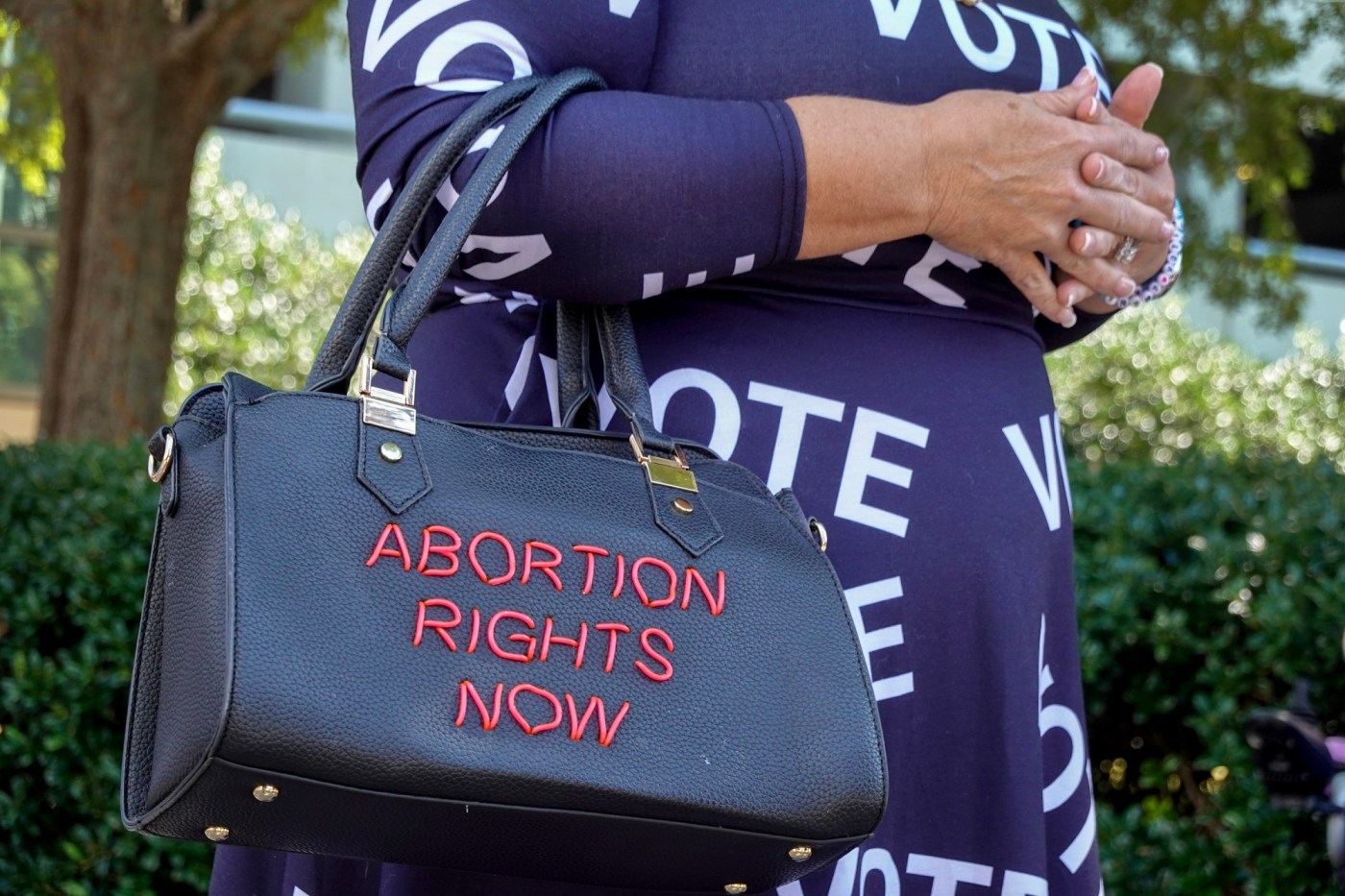
More women are seeking sterilizations post-Dobbs, experts say
In the months after the U.S. Supreme Court struck down the constitutional right to an abortion, there was a spike in the number of women seeking sterilizations to prevent pregnancy, a recent study shows.
Researchers saw a 3% increase in tubal sterilizations per month between July and December 2022 in states with abortion bans, according to the study published in September in JAMA, a journal from the American Medical Association. The Supreme Court struck down Roe v. Wade in June 2022.
The study looked at the commercial health insurance claim records of 1.4 million people from 15 states with abortion bans (Alabama, Arizona, Arkansas, Idaho, Indiana, Kentucky, Mississippi, Missouri, Oklahoma, Tennessee, Texas, Utah, West Virginia, Wisconsin and Wyoming). The study also examined the records of about 1.5 million people living in states with some abortion restrictions and 1.8 million in states where abortion remains legal. The researchers excluded 14 states that didn’t have records available for 2022.
“It’s probably an indication of women [who] wanted to reduce uncertainty and protect themselves,” said lead author Xiao Xu, an associate professor of reproductive sciences at Columbia University. In the first month after the ruling, sterilizations saw a one-time increase across all states included in the study, Xu and her team found. Her team also found continued increases in states that limited abortion to a certain gestational age, but those were not statistically significant.
Related Articles
Florida communities hit three times by hurricanes grapple with how and whether to rebuild
Three more women say Robert F. Kennedy Jr. cheated on Cheryl Hines with them
Deadly Maui fire erupted from earlier blaze believed to have been extinguished, investigation finds
New term for Supreme Court means cases on guns, porn access, environmental impacts
Condoms aren’t a fact of life for young Americans. They’re an afterthought
The researchers compared records for three groups: States with a total or near-total ban on abortion, including states where bans were temporarily blocked; states where laws explicitly recognized abortion rights; and limited states, where abortion was legal up to a certain gestational age.
While the study captures only the early months following the Dobbs ruling that overturned Roe v. Wade, experts say it’s part of an increasing body of evidence that shows a growing urgency for sterilization procedures amid more limited access to abortions, reproductive health care and contraception. Other studies have shown increases in tubal sterilization (commonly known as “getting your tubes tied”) and vasectomy requests and procedures post-Dobbs.
Diana Greene Foster, a professor and research director in reproductive health at the University of California, San Francisco, said the results are not surprising, given the negative repercussions for women who seek to end their pregnancies but are not allowed to do so.
Foster led the landmark Turnaway Study, which for a decade followed women who received abortions and those who were denied abortions. It found that women forced to carry a pregnancy to term experienced financial hardship, health and delivery complications, and were more likely to raise the child alone.
“We have found that women are able to foresee the consequences of carrying an unwanted pregnancy to term,” Foster told Stateline. “The reasons people give for choosing an abortion — insufficient resources, poor relationships, the need to care for existing children — are the same negative outcomes we see when they cannot get an abortion.
“So it is not surprising that some people will respond to the lack of legal abortion by trying to avoid a pregnancy altogether.”
Few doctors and services
States with abortion bans and other restrictions also tend to have large swaths of maternal health care “deserts,” where there are too few OB-GYNs and labor and delivery facilities. That creates greater maternal health risks.
One such state is Georgia, where until a court ruling this week, abortion was banned after six weeks. Dr. LeThenia “Joy” Baker, an OB-GYN in rural Georgia, said she sees patients in their early 20s who have multiple children and are seeking sterilizations to prevent further pregnancies, or who have conditions that make pregnancy dangerous for them. Her state has one of the highest maternal death rates in the nation.
On Monday, a Georgia county judge struck down the state’s six-week abortion ban, meaning that for now, women have access to the procedure up to about 22 weeks of pregnancy. The state is appealing the decision, and it’s expected to eventually be decided by the state Supreme Court.
The county judge’s ruling comes two weeks after ProPublica reported that two women in the state died after they couldn’t access legal in-state abortions and timely medical care for rare complications from abortion pills.
Black and Indigenous women disproportionately experience higher rates of complications, such as preeclampsia and hemorrhage, which contributes to their higher maternal mortality and morbidity rates. Baker said some of her patients say they want to avoid risking another pregnancy because of those previous complications.
“I have had quite a few patients, who were both pregnant and not pregnant, who inquire about sterilization,” she said. “I do think that patients are thinking a lot more about their reproductive life plan now, because there is very little margin.”
Along with the state’s abortion restrictions, Baker said women in her Bible Belt community feel social pressure that can push them toward sterilization.
“It is definitely more socially acceptable to say, ‘I’m going to get my tubes tied or removed,’ than to say, ‘Hey, I want to find abortion care,’” Baker said.
In states where lawmakers have proposed restrictions on contraception, women might feel tubal sterilization to be the most surefire way to prevent pregnancy. Megan Kavanaugh, a contraception researcher at the Guttmacher Institute, a reproductive health policy research center that supports abortion rights, said the research doesn’t say whether women who seek sterilization would have preferred another form of contraception.
“We need to both understand which methods people are using and whether those methods are actually the methods they want to be using,” said Kavanaugh, whose team studied contraceptive access and use in Arizona, Iowa, New Jersey and Wisconsin. “It’s really important to be monitoring both use and preferences in terms of heading towards an ideal where those are aligned.”
Tubal sterilizations can still fail at preventing a pregnancy, Foster said. One recent study noted that up to 5% of patients who underwent a tubal sterilization got pregnant later.
“If people are choosing sterilization who would otherwise pick something less permanent, then that is another very sad outcome of these abortion bans,” she added.
Another recent study, by Jacqueline Ellison, a University of Pittsburgh assistant professor who researches health policy, found that more young patients — both women and men — sought permanent contraceptive procedures in the wake of the Dobbs decision. The study focused on people ages 18 to 30 — the age group most likely to seek an abortion and the ones who previous studies suggest are most likely to experience “sterilization regret,” Ellison said.
A troubled history
The issue also can’t be disentangled from the nation’s history of coercive sterilizations, Ellison and other experts said. In the 1960s and 1970s, federally funded nonconsensual sterilization procedures were performed on Indigenous, Black and Hispanic women, as well as people with disabilities.
“People feeling pressured to undergo permanent contraception and people being forced into using permanent contraception are just two sides of the idea of reproductive oppression in this country,” Ellison said. “They’re just manifested in different ways.”
Medicaid, the joint federal-state health insurance program for low-income people, now has regulations designed to prevent coerced procedures. But the rules can have unintended consequences, said Dr. Sonya Borrero, an internal medicine physician and director of the University of Pittsburgh’s Center for Innovative Research on Gender Health Equity.
The process includes a 30-day waiting period after a patient signs a sterilization procedure consent form, Borrero noted. But pregnant women who want the procedure done right after delivery might not reach the 30-day threshold if they go into early labor, she said. She added that some patients are confused by the form.
Borrero launched a tool called MyDecision/MiDecisión, an English and Spanish web-based tool that walks patients through their tubal ligation decision and dispels misinformation around the permanent procedure.
“The importance and the relevance of it right now is particularly pronounced,” she said.
Stateline is part of States Newsroom, a national nonprofit news organization focused on state policy.
©2024 States Newsroom. Visit at stateline.org. Distributed by Tribune Content Agency, LLC.


